Growing Cannabis outdoors in Polyculture
List of contents
Why grow cannabis as a monoculture?
Even if we only have a little outdoor space for cultivation it can seem a bit absurd to only grow a single product. In cannabis cultivation, for various reasons, growers usually opt for monoculture, turning their back on the wealth of advantages brought by integrating cannabis within a polyculture of vegetables, aromatic plants and flowers.
Cannabis plants are perfectly adapted to horticultural gardens, whether urban or rural. Sharing the cultivation space with other vegetables has great benefits which can be used by cannabis plants in different ways.
Aside from the obvious benefit of harvesting a variety of products, polyculture cultivation has a range of direct benefits to the cannabis grown in it, positively influencing aspects as important as the control of pests and diseases, fertilisation, yield, and the final quality of the harvest.
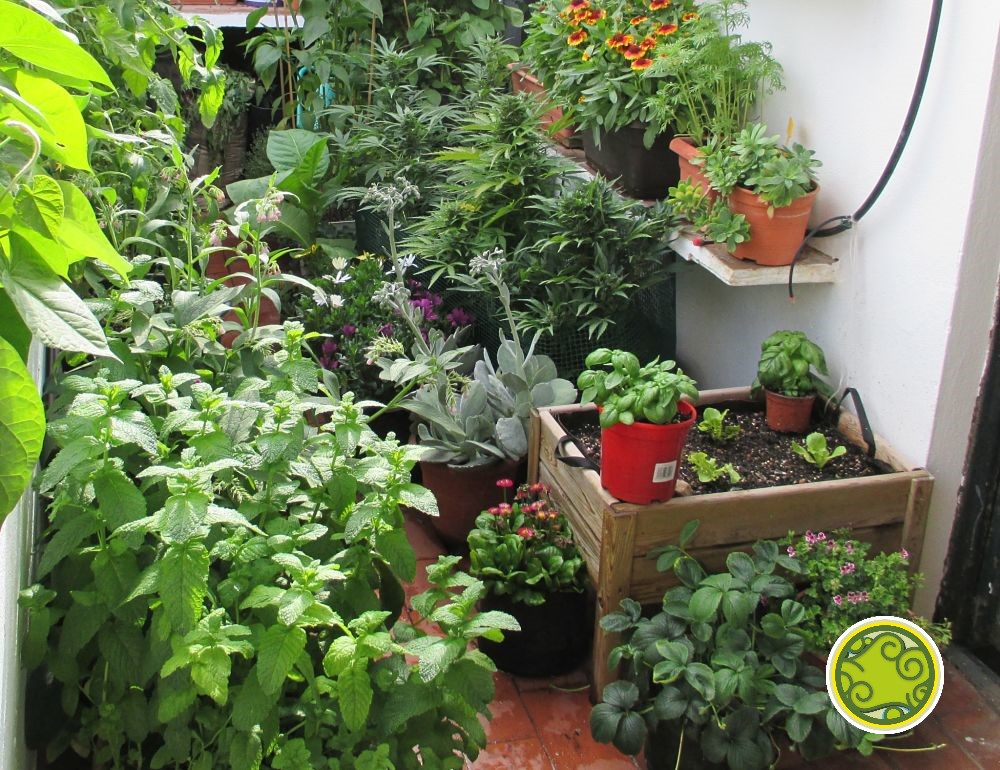
All this without mentioning another very important aspect offered by growing in polyculture, which is the possibility of camouflaging cannabis plants. The correct placement of coveted plants such as cannabis within a combination of horticultural plants can be key to going unnoticed. If that combination of plants contains aromatics and herbs they can also help to mask the often indiscrete smell of cannabis.
Allelopathy, associations between plants and cannabis
Within the plant world there are plants that have what we call allelopathic properties, via their the roots, leaves or flowers, these plants release and exude essences or fragrances that contain allelochemical compounds.
Allelochemicals are biochemical compounds which induce a biological phenomenon called allelopathy, a symbiotic or antagonistic relationship established between plants growing together in the same space via said biochemical compounds.
These allelochemical compounds influence cannabis plants and their immediate environment, that is, it influences the plants in the same grow, the fauna that inhabits and surrounds the grow, and the microorganisms that live within the cultivation substrate.
Their influences on flora and fauna are diverse, they can have attractive, repellent, inhibitory or stimulating effects. Plants with allelopathic properties can be vegetables, aromatic herbs, medicinal plants, flowers and even some “weeds”.
Including cannabis varieties in association with horticultural crops grown together with aromatic plants and flowers can be an excellent combination, as well as being an organic and ecological pest management option which encourages biodiversity in the environment surrounding the grow.
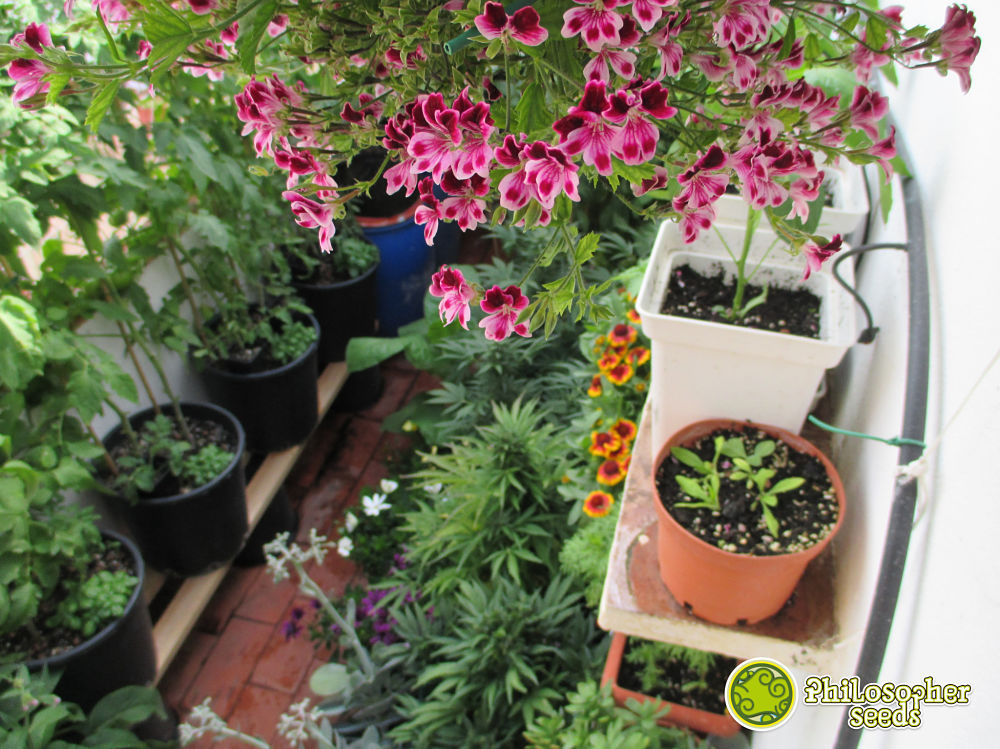
The arguments in favor of organic growing are countless, especially in the case of organic cannabis cultivation, in which improves the plants’ organoleptic properties (aroma and flavour), and the overall quality of the resin produced by the plants.
Crop associations and allelopathy are techniques and applications fully compatible with permaculture and sustainable growing, where there can be no doubt about the place of cannabis cultivation.
In organic gardens, it’s vital that the development of the plants be as natural as possible, achieving a 100% ecological fertilisation and pest control. The result is a clean end product, of better quality and respectful to the environment. Cannabis, organically grown, will always be superior cannabis.
Integrating cannabis in a polyculture
The incorporation of cannabis in a polyculture should be carried out in the most natural and logical way. The distribution of the grow space must respect the location of the other plants, they all must have the appropriate solar exposure and enough space to develop, and we must ensure that the vegetable plants aren’t covered up or tangled amongst themselves.
It is important to plan the grow space correctly, predicting the progressive increase in size of all the polyculture plants.
The distribution of the plants, especially those that will be close to the cannabis, can be configured following three criteria of plant association; companion or related plants, are plants that produce benefits to other plants of the same crop, repellent plants, plants that ward off insects harmful to the crop, and trap plants, “sacrificial” plants that work to attract harmful insects away from the main crop.
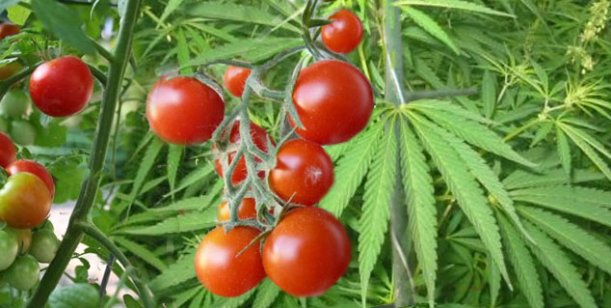
Companion plants
Companion or related plants are those that provide benefits to other plants, a positive association between plants that influences crop fertilisation, aroma and final flavour of plants. The companion plants should be sown next to our cannabis plants so that they can take full advantage of its effects.
Borage: Contributes and fixes vitamins and minerals in the soil, which benefits the plants sown around it. Its dry leaves can also be used as mulch that works very well for cannabis plants, thanks to the slow release of calcium and potassium concentrated in the borage leaves.
Alfalfa and Clover: Two excellent examples of nitrogen-fixing plants, an essential nutrient in the growth phase of cannabis. They maintain the level of nitrogen in the soil in addition to providing a range of minerals that help nourish the plants around them. In orchards or gardens where cannabis is cultivated, they help maintain good soil drainage, especially alfalfa. Clover is great as a live mulch, in addition to controlling the development of invasive weeds.
Comfrey: This plant, besides being quite beautiful, is an asset for any crop. Its roots reach a considerable depth to seek out minerals and nutrients from the subsoil, making them available to other plants in the grow. This function of capturing nutrients from deep down makes this plant a great dynamic accumulator, its leaves contain very high levels of potassium. A good mulch of dried comfrey leaves ensures the presence of potassium, an essential nutrient vital to the flowering period of cannabis plants.
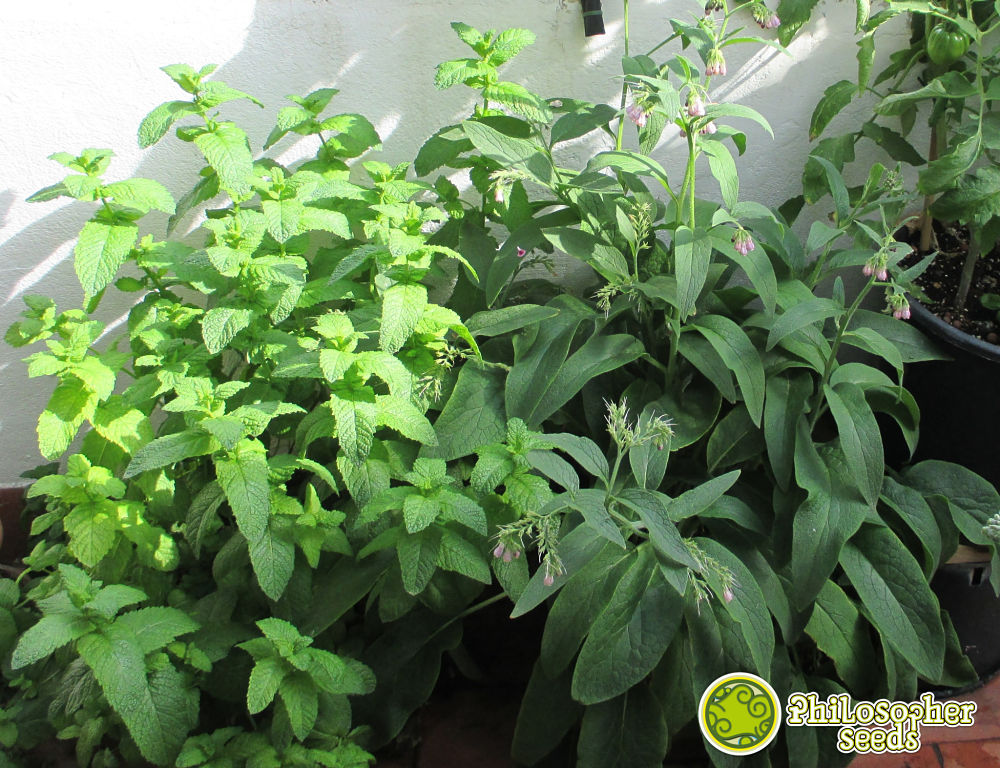
Repellent plants
A repellent plant is usually a plant that gives off an intense aroma that repels one or several types of insect. These plants are usually located on the perimeter of the grow, as a protective barrier, or near a particular plant, for example cannabis, to directly protect it from potentially harmful insects. Repellent plants are an effective method to control pests and diseases in the garden.
Basil: An aromatic plant with multiple culinary uses, in the garden it repels aphids, mosquitoes and whitefly. According to some growers, when cultivated at the base of cannabis plants, or in the same pot, it improves the organoleptic properties of the harvest.
Mint: Another well-known aromatic plant very common in terraces, gardens and orchards, famous for its intense aroma and its properties. Mint helps keep ants, whitefly and cockroaches away from cannabis plants. It is easy to and fast to take over, given its vigorous growth, it is always recommended to isolate it, growing it in a pot to prevent it being too invasive. Its strong aroma can help mask the smell of cannabis.
Nasturtium: Ornamental plant from South America, widely spread in gardens and orchards. It helps to repel and remove snails, ants, whiteflies and aphids from the main plants. Planted close to the cannabis will protect it and add colour to the garden with the varied shades of red, orange and yellow of its flowers. Its petals are edible, and are a great source of vitamin C.
Chamomile: Chamomile is well known for its properties when taken as an infusion. Planted among cannabis plants, as well as visually enriching the garden with its flowers, it also repels whitefly and nematodes. As the plant dies and breaks down it releases phosphorus and potassium to the soil.
Sacrificial or trap plants
Trap plants or sacrificial crops are another useful method of plant association in the fight against insect pests. These plants work by attracting harmful insects, keeping them away from the main crop plants, like cannabis. They are distributed around the garden, or near and interspersed between any sensitive plants most likely to come under attack. Once the pest is located on the sacrificial plant, it’s easy to eliminate. Another function of trap plants is to give shelter to predators of the harmful insect pests that attack our crops.
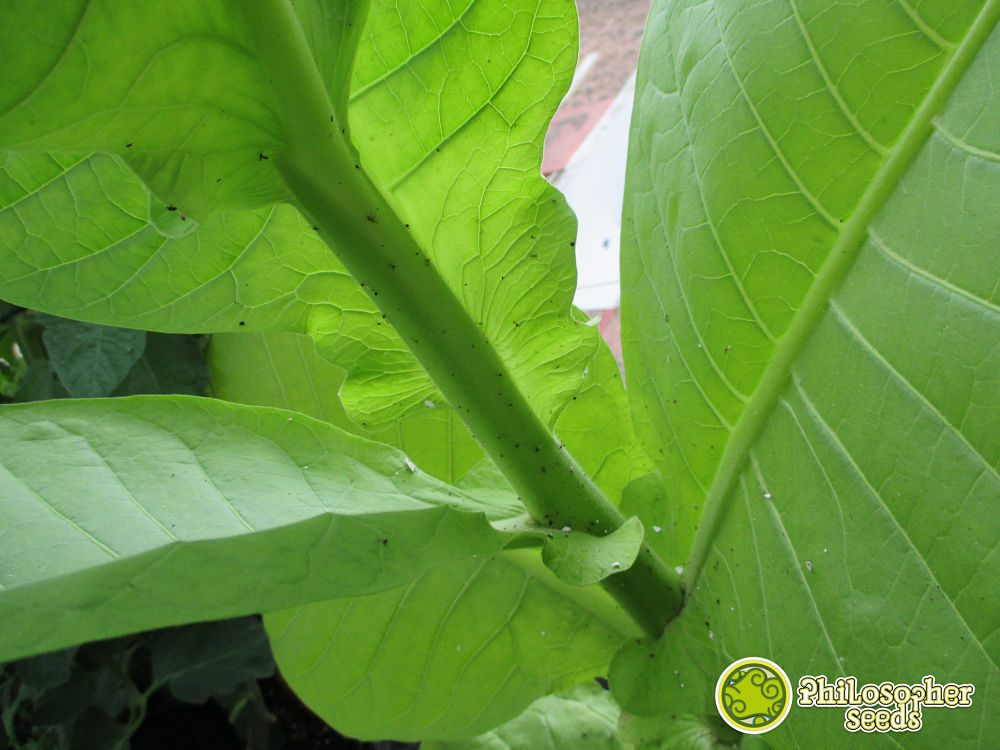
Sunflower: Sunflowers are a great ally of cannabis growers for various reasons. They attract and keep harmful insects such as aphids and mites away from the crop. They also attract pollinating insects, which are to be welcomed as many of these are also predators of insect pests which prey on cannabis, like the dreaded red spider. The size and colours of the sunflowers help camouflage the cannabis plants.
Tobacco: The tobacco plant is one of the trap plants par-excellence, and no outdoor cannabis garden should be without one! Tobacco, with its large leaves covered in trichomes and glands capture insects such as the whitefly and aphids, which are attracted by the nicotine and die trapped on the leaves. By means of a simple procedure using the leaves, we can produce an effective homemade organic insecticide, a is elaborated. Because of the size of tobacco plants, they are also a great option to help hide our cannabis crop from prying eyes.
Rue: Widely used in traditional horticulture as a sacrificial trap plant, its aroma and colour confuse and attract insects pests of cannabis such as flies, aphids, mites, and slugs. It also acts to repel both whitefly and domestic cats. Rue is a rustic plant that adapts very well, is not demanding on the soil, just needing regular irrigation and good solar exposure.
These plants are just an example of the wealth of goodness offered to us by nature, and sadly, due to a lack of knowledge, their applications for cannabis cultivation are widely ignored.
We’re in no doubt that there are many more polyculture situations and configurations where the integration of cannabis plants is possible, so we greatly encourage growers to investigate this deep and complex subject and break from monocultures by integrating different vegetables with cannabis.
Happy poly-cultivating!






